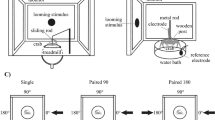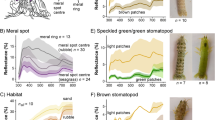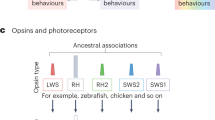Abstract
ALTHOUGH it is at first sight unlikely that a crab should take note of the direction of the Sun's movement directly, two lines of evidence already suggest this conclusion. Crabs follow with their eyes the movements of a striped drum which is revolved around them at speeds even lower than one revolution per day1, and several species of lower Crustacea2 as well as the Pacific shore crab Hemigrapsus3 utilize some feature of the path of the Sun as a basis for directional escape movements in relation to the local direction of the sea.
This is a preview of subscription content, access via your institution
Access options
Subscribe to this journal
Receive 51 print issues and online access
$199.00 per year
only $3.90 per issue
Buy this article
- Purchase on Springer Link
- Instant access to full article PDF
Prices may be subject to local taxes which are calculated during checkout
Similar content being viewed by others
References
Horridge, G. A., and Sandeman, D. C., Proc. Roy. Soc., B, 161, 216 (1964).
Pardi, L., and Papi, F., in The Physiology of Crustacea, edit. by Waterman, T. H., 2, 365 (Academic Press, 1961).
van Tets, G. F., University of Brit. Columbia thesis (1956) (quoted in ref. 2).
Drzewina, A., C.R. Soc. Biol., 64, 1009 (1908).
Papi, F., in Cold Spring Harb. Symp. Quant. Biol., 25, 475 (1960).
Author information
Authors and Affiliations
Rights and permissions
About this article
Cite this article
HORRIDGE, G. A Direct Response of the Crab Carcinus to the Movement of the Sun. Nature 207, 1413–1414 (1965). https://doi.org/10.1038/2071413a0
Published:
Issue Date:
DOI: https://doi.org/10.1038/2071413a0
Comments
By submitting a comment you agree to abide by our Terms and Community Guidelines. If you find something abusive or that does not comply with our terms or guidelines please flag it as inappropriate.



